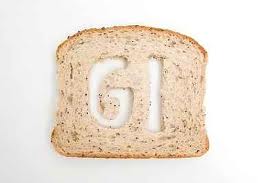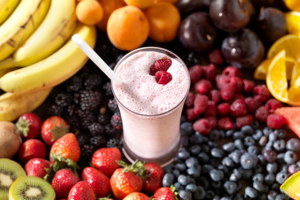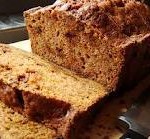Posts Tagged ‘calories’
Monday, December 10th, 2012
It’s the Christmas party season again! How can we avoid putting on extra weight while having a great time? The following are some holiday eating tips to help you do just that so that you can still look good and be healthy in January.
- Don’t go to a party hungry. We often eat faster and more when we are hungry – therefore eat a wholesome breakfast and lunch on the day to avoid overeating at the party.
- Watch your portion. Treat yourself a nice drink, dessert, chocolate or sweets without guilt, but always watch your portion. Go for small portions. This way you can sample all the different foods. Moderation is always the key.
- Make a conscious choice to limit high fat items. High fat food items can be found in fried food, cream-based soup, cheese-filled casseroles, pies, processed meats such as salami and sausages, some pastries and baked goods.
- Try other versions of alcohol. Instead of beer, cider, creamy liqueurs try dry wine or spirits with diet mixer, which have fewer calories.

- Drink plenty of water. Alcohol and coffee can dehydrate your body.
- Physical activity. Take nice brisk walks with your loved ones and enjoy their company in the holiday season.
Tags: activity, alcohol, calories, carlow, christmas, diet, fat, healthy eating, kilkenny, nutrition, party, portion, snack, sugar, winter
Posted in General | Comments Off
Monday, October 1st, 2012
What is Glycaemic Index (GI)?
Glycaemic Index is a measure of how high your blood sugar gets after eating a food. It was originally designed to help people with diabetes to make better food choices but research has found that it might be useful in helping people to get to and stay at a healthy weight.
How does GI help with weight?
High blood sugar from high GI foods cause increases in the amount of insulin your body makes. Insulin helps to lower blood sugar levels after a meal but it also is important in helping your body to store other nutrients including fat. High levels of insulin encourage your body to store fat, rather than burn it. This means that when blood sugar increases it can encourage your body to store fat.
When you eat low GI foods your blood sugar level stays lower (but not too low) and so insulin stays lower and this can encourage your body to burn fat. Low GI foods are also more satisfying and help keep your metabolism running faster. This is why they are important for helping anyone to lose weight or to keep off weight they have already lost.
Which foods are low and which are high GI?
Only foods with carbohydrate can raise blood sugar levels. Any foods with no carbohydrate are low GI foods. Foods with no carbohydrate include meat, chicken, fish and eggs.
|
High GI Foods
|
Low GI Foods
|
|
• Most breads – brown or white
• Potatoes
• Cooked fruit
• Some root vegetables e.g. parsnips
• Foods high in sugar e.g. soft drinks, sweets, biscuits, cakes, etc
• Popcorn
• Crisps
|
• Porridge, high fibre breakfast cereals
• Bread made with 50% oats or more
• Pasta – brown or white
• Brown rice and Basmati Rice
• Pulses – beans, peas and lentils
• Fresh fruit, fruit smoothies
• Meat, poultry, fish, eggs
• Dairy products
• Most vegetables and salads
|
Tags: 5 a day, calories, carbohydrate, carlow, diabetes, dietitian, fat, fruit, glycaemic index, healthy eating, kilkenny, lose weight, nutrition, nutritional concepts, vegetables
Posted in General | Comments Off
Monday, July 2nd, 2012
Ingredients
1 banana
200ml low fat strawberry yoghurt
120ml low fat milk
120ml crushed ice
Method
- Place all the ingredients in a blender or food processor.
- Blend for 30 seconds to a smooth, thick drink.
- Pour into a tall glass, add ice and strawberries to decorate if you wish.
Tags: 5 a day, banana, calories, diet, drinking, energy, fruit, healthy eating, lose weight, low fat, stawberry, vitamins and minerals
Posted in Recipes | Comments Off
Monday, May 21st, 2012
Takeaways are often cheap, convenient and satisfying but, unfortunately, they are not always very healthy. Here are some tips on foods to avoid and healthier options when ordering your favourite takeaway.
Fish and chips
- Try to avoid: thin-cut chips, pies such as cheese and onion pie or steak and kidney pie, jumbo sausage.
- Healthier options: fish coated in breadcrumbs, mushy peas, thicker-cut chips without salt.
Italian
- Try to avoid: large deep-pan pizzas, pizzas with the crust stuffed with cheese, triple cheese with pepperoni pizzas, creamy pasta sauces, garlic bread.
- Healthier options: small or medium pizza with a thin base and vegetable or lean meat topping, tomato-based pasta sauces, bruschetta.
Chinese
- Try to avoid: sweet and sour battered pork balls with special or egg fried rice, prawn toast, spring rolls.
- Healthier options: crab and corn soup, steamed dumplings, steamed vegetables and plain boiled rice, steamed fish, chicken chop suey, Szechuan prawns.
Thai
- Try to avoid: fried rice, fish cakes, spring rolls, prawn crackers, satay skewers with peanut sauce and sweet and sour dishes.
- Healthier options: clear soups such as tom yum, salads, stir-fried meat, fish or vegetable dishes, steamed seafood dishes, such as fish or mussels.
Indian
- Try to avoid: any creamy curries such as korma, passanda or masala with pilau rice, naan, bhajis, pakoras and poppadoms.
- Healthier options: tandoori or madras with chicken, prawns or vegetables, plain rice and chapatti.
Kebab and burgers
- Try to avoid: large doner kebab with mayonnaise and no salad, burgers with cheese and mayonnaise, thin-cut chips, chicken or fish patties deep fried in batter.
- Healthier options: shish kebab with pitta bread and salad, grilled burgers made from lean fish or meat (beef or whole chicken breast) and without cheese and mayonnaise.
Tags: calories, carlow, diet, fat, kilkenny, lose weight, nutrition, nutritional concepts, saturated fat, sugar, takeaway
Posted in General | Comments Off
Monday, April 9th, 2012
So it’s Easter time again! As I researched the content for this blog I came across this article on the Daily Mail website and decided to share it with you all. It’s definitely an interesting read. I hope this helps to keep you all on the right track. Enjoy!
http://www.dailymail.co.uk/health/article-382232/Easter-Eggstravaganza-Surviving-Easter-diet.html
Tags: activity, calories, carlow, diet, easter, energy, fat, food label, healthy eating, kilkenny, lose weight, nutritional concepts, saturated fat, sugar
Posted in General | Comments Off
Monday, February 13th, 2012
Valentine’s Day might mean that there is a chance you’ll be eating out. However, eating out usually means that we have little control over how the food is prepared or how large the portion is. Unlike packaged food, foods bought from cafes, restaurants etc. don’t have to carry nutritional information and so opting for the healthiest option might not always be easy. However, with these helpful tips eating out on Valentine’s Day can be both enjoyable and healthy!
General tips
- Never arrive at a restaurant hungry!
- Think ahead, if you know you’re eating out later, choose wisely earlier in the day to keep calories, fat, sugar and salt intakes under control.
- Leave a little time for your food to digest before you order a dessert. Give your stomach time to send signals to your brain you are full (approx 20 minutes). If you still want a dessert, consider splitting it with one of your friends. Opt for sorbets, or fruit dishes to balance out a heavy main course.
- Speak up about how you’d like a dish prepared e.g. ask for no mayonnaise.
- You’re more likely to overeat at an ‘all you can eat’ style buffet.
- Choose side orders of salad or vegetables to fill up on.
- Cut off any visible fat from meat to keep saturated fat intake down.
- Look out for smaller portions i.e. a main meal option as a starter size.
- Opt for dishes which are grilled, baked, steamed, poached rather than fried.
- Check the menu for dressings on salads and ask for it to be on the side. An otherwise healthy and nutritious salad could be drowned in a high fat sauce, bumping up its calorie content.
- Avoid cheese, cream or butter-based sauces
Tags: calories, carlow, diet, eating out, fat, healthy eating, kilkenny, low fat, nutrition, nutritional concepts, portion, saturated fat, sugar, Valentine's Day, vegetables
Posted in General | Comments Off
Monday, January 16th, 2012
Good nutrition is important all through life and particularly so when trying to become pregnant. 
It is a good idea to make any changes to your diet and fitness in plenty of time before you become pregnant (at least 3-4 months beforehand). This helps to boost your fertility and makes sure that your stores of key nutrients are at their best and that your weight is stable.
Lifestyle changes are just as important for men as for women. Obesity, alcohol intake and nutritional deficiencies can have a negative effect on both male and female fertility- so look at taking these positive steps together.
So here are some tips to achieve that healthy lifestyle and help you on your journey to become pregnant -
- Try to get to a healthy weight – follow healthy eating guidelines and exercise routines.
- Take a folic acid supplement every day – Folic acid is a B vitamin that plays a crucial role in the formation of the spinal cord and brain by helping the neural tube to close over properly. Simply start taking a 400mcg folic acid tablet every day at least 10-12 weeks before you plan to get pregnant. Continue to take it until week 12-14 of your pregnancy.
- Eat more iron rich foods – Most women in Ireland don’t eat enough iron rich foods. Including rich sources like lean red meat, chicken, turkey and oily fish several times a week will help to boost your stores. Including plenty of vitamin C from fruits and vegetables and cutting down on your tannin (tea, red wine) boosts your iron absorption.
- Calcium & Vitamin D – Good stores are needed for baby’s development and to protect mother’s bones. Be sure to eat at least 3 servings of dairy foods (milk, cheese, yoghurt) every day to meet your calcium needs. Vitamin D is found in foods like oily fish, margarines, cheese and eggs. It is also made in the skin through the action of sunlight. Just 20 minutes daylight on hands and face everyday will help to boost your stores.
- Alcohol- cut it down or cut it out – Alcohol intakes higher than the guideline of 14 units a week for women and 21units a week for men may have a negative effect on fertility for both men and women. Excessive alcohol is harmful to your baby’s development, and the early days and weeks of life (when you may not know that you are pregnant) are most sensitive to even moderate amounts of alcohol.
- Smoking- quit now – Smoking cigarettes reduces your fertility. Smoking when pregnant is harmful to your baby and is linked with low birth weight and premature birth.
Tags: activity, calories, carlow, diet, fertility, healthy eating, kilkenny, lose weight, nutrition, nutritional concepts, preconception, pregnancy, vitamins and minerals
Posted in General | Comments Off
Monday, January 2nd, 2012
So it’s the time for New Year Resolutions again! As I researched the content for the first blog of 2012 I came across this video on the BBC website and decided to share it with you all. 
It gives us an insight into the psychological impact of sticking to New Year Resolutions. I hope this helps to keep you all on the right track. Enjoy!
< http://www.bbc.co.uk/go/em/fr/-/news/health-12068595 >
Tags: activity, calories, carlow, diet, healthy eating, kilkenny, lose weight, new year resolution, nutrition, nutritional concepts, portion
Posted in General | Comments Off
Monday, November 7th, 2011
A calorie is simply the unit that we use to measure energy.
|
All foods have a ‘calorific value’ and this is simply the amount of calories (energy) that a food will supply your body when it is eaten. Food labels on packaged foods usually list the energy content in two units; one is kcals (calories) the other is in kj (joules).
|
|
Your body needs energy to be able to fuel metabolic pathways that enable the body to work properly. We are all individuals and we have our own unique metabolic rate (this is the rate at which our body consumes calories per day). The average person’s metabolic rate is approximately 2000 calories per day.
The simple truth is that there is a ‘balance of energy’ in your body, if you burn more or less calories (through activity) than your body consumes daily (through food), you will lose or gain weight accordingly.
So how do you ‘burn’ calories?
There are a number of reasons why calories are burned in your body.
- Your body requires a certain number of calories per day to simply stay alive. This is called Basal Metabolic Rate (BMR). Your body burns these calories to maintain the most basic functions of your body such as breathing, blood circulation and brain activity.
- The rest of the calories are ideally burned through exercise and activity. Everything you do results in you burning calories – washing up, hoovering, climbing the stairs, anything that involves movement will contribute to the total calories burned by the body.

Tags: activity, balance, calories, carlow, diet, energy, food label, healthy eating, kilkenny, nutrition, nutritional concepts
Posted in General | Comments Off
Monday, October 24th, 2011
Preparation: 10 mins | Cook: 1 hour
Ingredients
- 200g plain flour
- 1 ¼ teaspoons bicarbonate of soda
- 1 teaspoon salt
- 1 teaspoon ground cinnamon
- ½ teaspoon ground nutmeg
- 255g pureed pumpkin
- 200g dark brown soft sugar
- 110ml buttermilk
- 1 egg
- 2 tablespoons butter, softened
Method
- Preheat oven to 180°C.
- Sift the flour, bicarbonate of soda, salt, cinnamon and nutmeg into a large bowl.
- Mix in the pumpkin, brown sugar, buttermilk, egg and butter until well blended. Pour into a 9×5 inch loaf tin and smooth the top.
- Bake for 1 hour in preheated oven, or until a cocktail stick inserted into the centre comes out clean.
Tags: calories, carlow, diet, halloween, healthy eating, kilkenny, nutrition, nutritional concepts, pumpkin, tasty
Posted in Recipes | Comments Off











